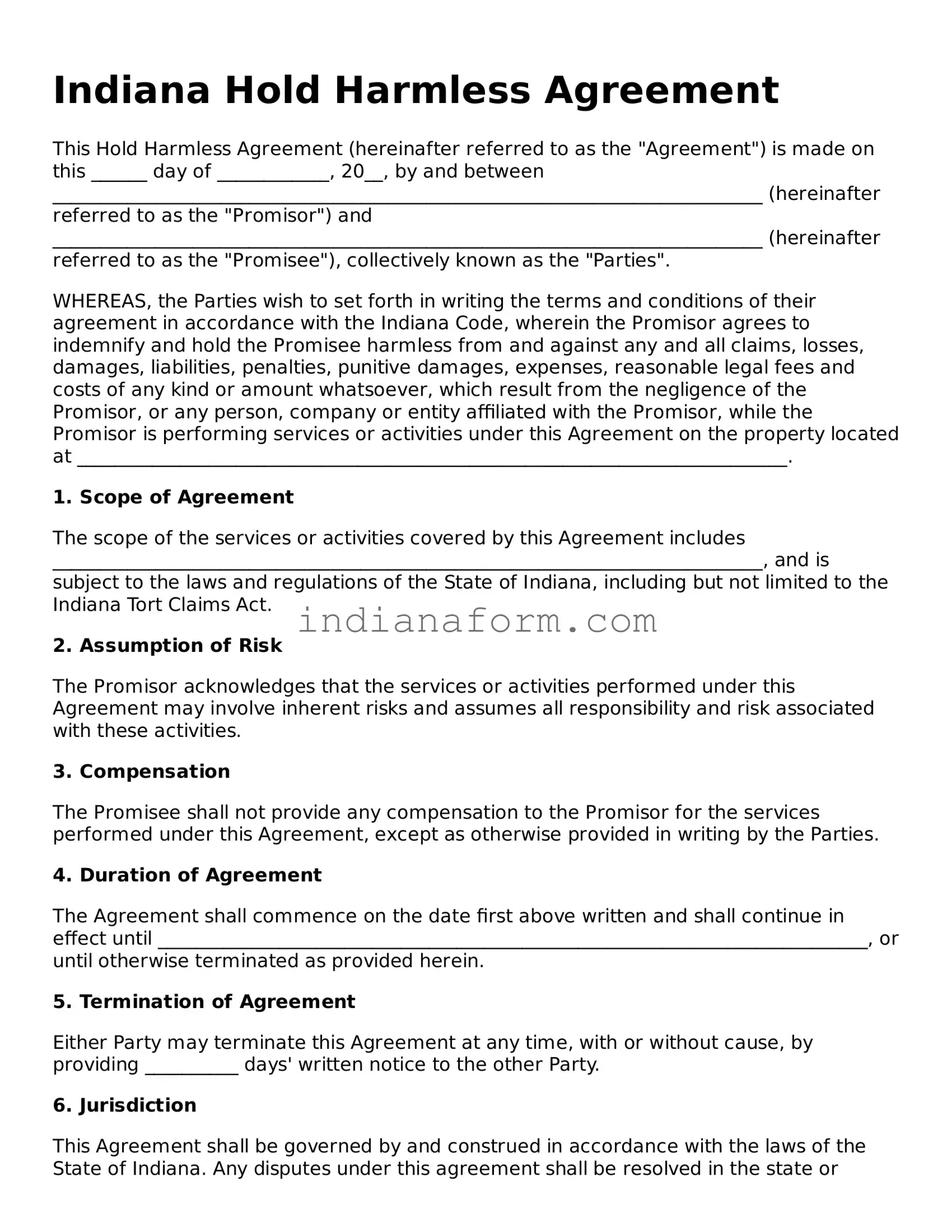Indiana Hold Harmless Agreement
This Hold Harmless Agreement (hereinafter referred to as the "Agreement") is made on this ______ day of ____________, 20__, by and between ____________________________________________________________________________ (hereinafter referred to as the "Promisor") and ____________________________________________________________________________ (hereinafter referred to as the "Promisee"), collectively known as the "Parties".
WHEREAS, the Parties wish to set forth in writing the terms and conditions of their agreement in accordance with the Indiana Code, wherein the Promisor agrees to indemnify and hold the Promisee harmless from and against any and all claims, losses, damages, liabilities, penalties, punitive damages, expenses, reasonable legal fees and costs of any kind or amount whatsoever, which result from the negligence of the Promisor, or any person, company or entity affiliated with the Promisor, while the Promisor is performing services or activities under this Agreement on the property located at ____________________________________________________________________________.
1. Scope of Agreement
The scope of the services or activities covered by this Agreement includes ____________________________________________________________________________, and is subject to the laws and regulations of the State of Indiana, including but not limited to the Indiana Tort Claims Act.
2. Assumption of Risk
The Promisor acknowledges that the services or activities performed under this Agreement may involve inherent risks and assumes all responsibility and risk associated with these activities.
3. Compensation
The Promisee shall not provide any compensation to the Promisor for the services performed under this Agreement, except as otherwise provided in writing by the Parties.
4. Duration of Agreement
The Agreement shall commence on the date first above written and shall continue in effect until ____________________________________________________________________________, or until otherwise terminated as provided herein.
5. Termination of Agreement
Either Party may terminate this Agreement at any time, with or without cause, by providing __________ days' written notice to the other Party.
6. Jurisdiction
This Agreement shall be governed by and construed in accordance with the laws of the State of Indiana. Any disputes under this agreement shall be resolved in the state or federal courts of Indiana.
7. Entire Agreement
This Agreement constitutes the entire agreement between the Parties concerning the subject matter hereof, and it replaces all prior oral or written communications, representations, or agreements.
8. Amendment
This Agreement may only be amended by a written document duly executed by all Parties.
9. Signatures
PROMISOR: ___________________________________ Date: _____________________
PROMISEE: ___________________________________ Date: _____________________
